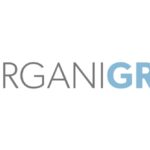 The pound advanced against the US dollar to the strongest level in almost two weeks, after official data showed UK home values increased in February for a 14th straight month, adding to evidence the UK economy is gaining traction.
The pound advanced against the US dollar to the strongest level in almost two weeks, after official data showed UK home values increased in February for a 14th straight month, adding to evidence the UK economy is gaining traction.
GBP/USD hit a session high at 1.6744 at 07:45 GMT, after which consolidation followed at 1.6734, adding 0.27% on a daily basis. Support was likely to be received at February 27th low, 1.6677, while resistance was to be encountered at February 17th high, 1.6823, also the pairs highest since November 2009.
A report by the UK Nationwide Building Society revealed that home prices rose 0.6% this month, capping a 14th month of advances and after Januarys reading was revised up to a 0.8% increase from initial estimate of 0.7%. The average value of UK homes reached 177 846 pounds or approximately $296 000 this month, which is a 9.4% increase from a year ago. Analysts had projected that house prices will rise by 9% in February, after a 8.8% gain in the previous month. The boost in the UK property market was mainly driven by low borrowing costs and easier availability of loans for home purchases.
The British Banker’s Association reported on Tuesday that loans for home purchases in the UK surged to 49 972 in January, the most since September 2007. In December the number of new mortgages approved was 46 521. The median analyst’ forecast was for a smaller increase to 47 150 in January.
“Demand continues to be supported by record low interest rates, improved credit availability and rising consumer confidence thanks to the healthy gains in employment,” said Robert Gardner, Nationwide’s chief economist, cited by Bloomberg. “Price growth is being supported by the fact that the supply of housing remains constrained.”
The UK Office for National Statistics reported on Wednesday that the nation’s gross domestic product by 0.7% in the fourth quarter, in line with analysts’ expectations and unchanged from preliminary estimate. The UK economy expanded by 0.8% in the third quarter.
On annual basis, the UK gross domestic product surged by 2.7% in the fourth quarter from a year ago, down from an initial estimate of 2.8%, but exceeding the 1.9% increase in the previous quarter.
In its quarterly inflation report released on February 12, the central bank revised its forward guidance, replacing the 7% unemployment threshold with a range of economic indicators, including spare capacity.
BoE said the unemployment rate will probably fall below 7% in the first quarter of this year, but at the same time underscored there was “scope to absorb spare capacity further before raising bank rate” from the current record-low 0.5%. BoE estimated an output gap between 1% and 1.5% of UK gross domestic product.
The central bank also raised its forecast for the UK economic growth in 2014 to 3.4% from 2.8% projected in November and predicted the first increase of interest rates will come in April 2015. Bank of England projected inflation of 1.9% in the next three years, below the central bank target of 2%.
The sterling has advanced 13% in the past year, being the best performer of 10-developed-nation currencies tracked by Bloomberg Correlation-Weighted Indexes, while the US dollar rose mere 0.9%.
Meanwhile, Federal Reserve Chair Janet Yellen said that the central bank will probably continue with its plan to gradually reduce the scale of monthly asset purchases, while policy makers are trying to determine whether the weakness economy has recently demonstrated is due to temporal factors.
“Unseasonably cold weather has played some role,” she said in her testimony in front of the Senate Banking Committee on Thursday. “What we need to do, and will be doing in the weeks ahead, is to try to get a firmer handle on exactly how much of that set of soft data can be explained by weather and what portion, if any, is due to softer outlook.”
Yellen indicated that the Federal Reserve is abandoning its numerical threshold, that has linked any decision to increase borrowing costs to nation’s rate of unemployment. She also reiterated what the central bank has already said in a number of statements – that the scale back of monetary stimulus will continue at a “measured pace”, while the bond-purchasing program will likely be exited in the fall.
In addition, the Department of Commerce said yesterday that US durable goods orders, fell 1% in January, following a revised 5.3% drop in the previous month. Analysts had anticipated that bookings for durable goods or those meant to last at least three years will decline 1.7% last month.
Orders for durable goods, which exclude volatile transportation items, rose 1.1% in January, confounding experts’ forecasts of a 0.3% drop. December’s core durable goods orders have been revised down to a 1.9% decline from a previously estimated 1.6% drop.
A separate report revealed that the number of initial jobless claims in the United States rose by 14 000 to reach 348 000 during the week ended on February 22nd, while analysts had projected a decline to 335 000. This higher-than-expected number of Americans, who filed for unemployment benefits last week, boosted concerns that nation’s labor market is demonstrating an uneven recovery.
Elsewhere, AUD/USD reached a daily low at 0.8939 at 4:50 GMT, after which the pair consolidated at 0.8957, down 0.10% for the day and set for a 0.23% weekly loss. Support was likely to be received at February 27th low, 0.8905, while resistance was to be encountered at February 26th high, 0.9026.





